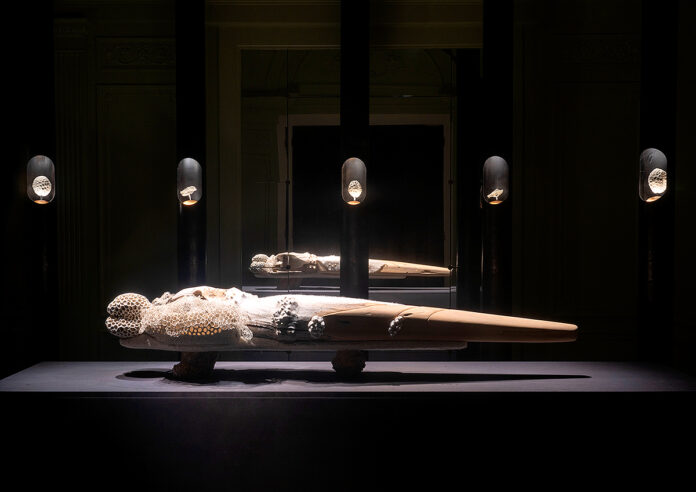From 6 to 20 May, the Luxembourg Pavilion at Expo Osaka hosted the remarkable and ambitious art project Fallen Trees, conceived by Luxembourgish wood sculptor Pitt Brandenburger. This compelling exhibition combined traditional craftsmanship with a deep cultural and ecological consciousness.
At the heart of the show were two sculptures dedicated to the elder and apple trees, created in collaboration with artists and artisans from various disciplines.
With Fallen Trees, Brandenburger brought together his two great passions: traditional craftsmanship and nature – specifically, trees. “Trees are not only vital to our ecosystems, but are also a fundamental part of our cultural heritage,” he explains. “With each sculpture, I want to tell a story and raise awareness of the value and beauty of nature.”
The Fallen Trees project is an open-ended series of sculptures made in collaboration with artists and craftspeople and constructed exclusively from naturally fallen trees. The project emphasizes ecological responsibility, using these materials to highlight the cultural and ecological value of native trees.
Wondrous Works of Art
The sculptures are anthropomorphic and contain hidden elements, much like a puzzle. On closer inspection, flower-like forms reveal themselves as finely crafted brushes, while in another spot, a musical instrument lies beneath a cover. This sense of playful discovery is central to the concept – Brandenburger’s aim is above all to educate.
The elder sculpture was created with artists who interpreted various aspects of the tree. Renowned ceramicist Ellen van der Woude incorporated elder tree textures into her ceramics. Silversmith Birgit Maringer recreated elderflowers in silver to highlight their delicate details. Flute maker Rostislav Žďárský evoked the tradition of making flutes from hollow elder branches. Felt artist Carine Mertes produced a cover and base for the sculpture.
The apple tree sculpture brings together a range of artisan techniques and natural materials. Dyeing expert Maggy Backes used pigments from apple leaves to dye fabrics that are integrated into the sculpture. Brushmaker Michaela Fedeschin from Hanover contributed handmade brushes with applewood handles. Textile artist Carmen Laigre-Vazquez from Olingen created a complementary quilt.

Luxembourgish Master Craftsmanship
The World Expo in Osaka offered an ideal platform for this rich and meaningful project. In May, international visitors had the chance to explore the hidden intricacies of the sculptures, experiencing not only exceptional Luxembourgish craftsmanship but also a contemporary reflection on our relationship with nature – perfectly in line with the spirit of World Expos: innovation, originality, and insight into the challenges of our time.

The secret Life of the Elder Tree
To further his educational mission, Brandenburger published a children’s book about the elder tree, written by the artist himself. The story follows a boy named Theo who discovers that witches live in elder bushes, just as old folklore suggests. These witches teach him about the importance and diversity of the tree. The illustrations were done by Iva Mrázková and the book was bound by bookbinder Danièle Köller. “The book is especially aimed at young readers to help them understand the value of nature and craftsmanship,” says Brandenburger.
